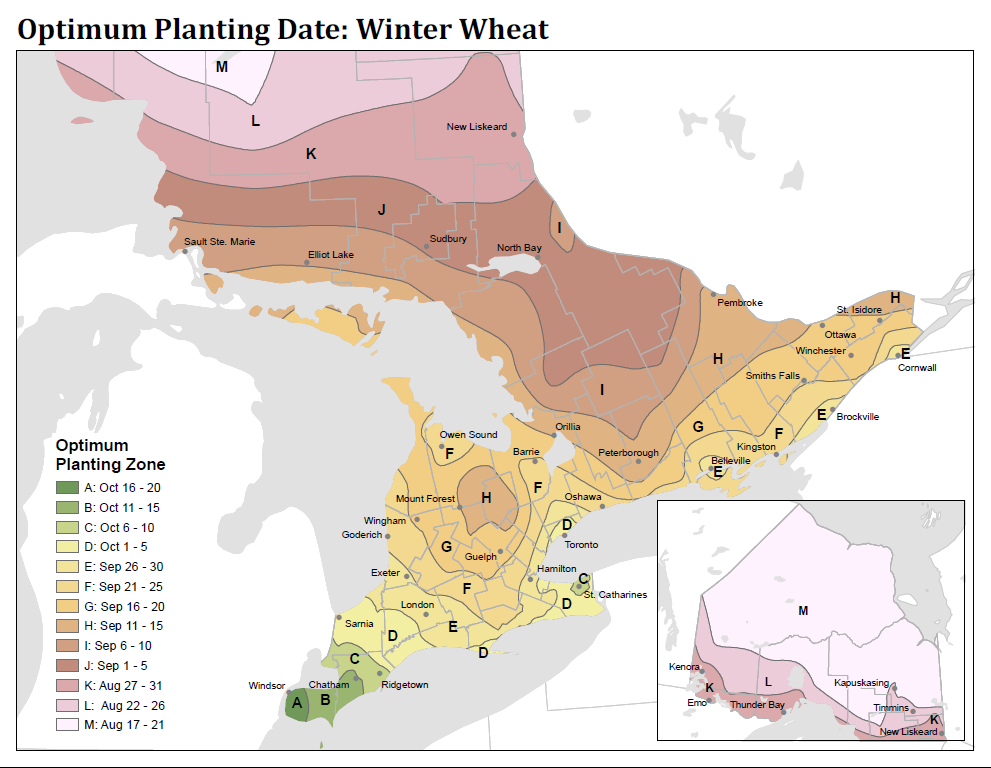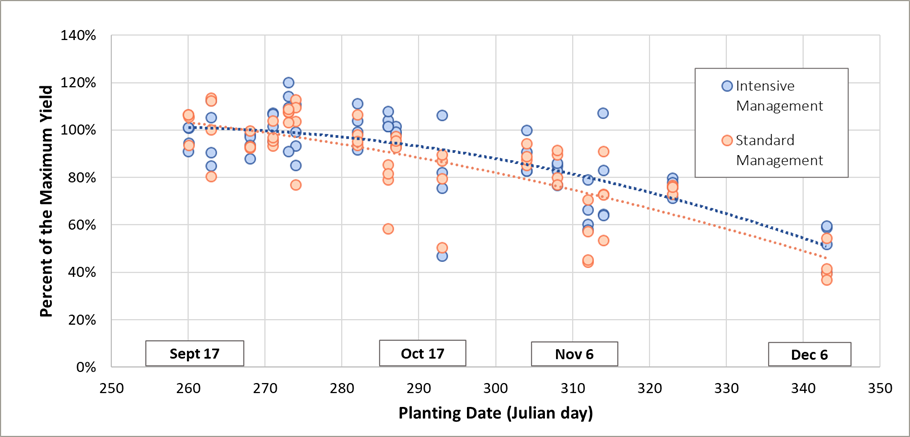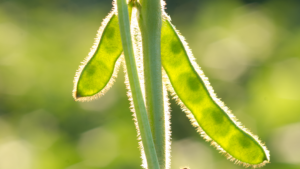Planting date matters
AGRONOMIC INFORMATION FROM ONTARIO'S CROP SPECIALISTS

Ministry of Agriculture, Food and Rural Affairs

THE PLANTING DATE map used by Ontario growers was developed by research conducted in the 1990s (Figure 1). This research found that every day planting is delayed beyond the optimum planting date for a region, 1.1 bu/ac of yield potential is lost. However, with newer genetics and a changing climate, we began to wonder, are these planting dates still accurate and what really leads to increased yields in earlier planting dates? Research conducted by Emma Dieleman at the University of Guelph, Ridgetown Campus, provides greater insight into why early planting is so important to maximize winter wheat yields.


Four planting dates and two management regimes were assessed, and crop biomass accumulation, radiation interception, grain filling rate, and duration were measured to compare crop growth and yield formation. The research found that early winter wheat planting increased yields by 10.4-50.7 bu/ac (Figure 2). Much of the yield increases could be attributed to an increase in the number of productive heads, with early planted wheat having an average of 284-383 heads/m2 more than the late planted wheat across all locations, regardless of management strategy. Environmental conditions during the grain fill period strongly influenced kernels per head and test weight.
Emma’s research also found that by planting wheat early or within the optimum planting window for a particular region, there was earlier canopy closure and higher biomass accumulation at every single growth stage throughout the season, enabling the plants to intercept more solar radiation which ultimately led to an increase in yields.
This research re-emphasizes the need to plant winter wheat within a region’s optimum planting date window for maximum yield potential. Strategies such as selecting shorter-season soybean varieties in those fields intended for winter wheat, planting after edible beans or canola, and early equipment preparation will help ensure winter wheat is planted timely in the fall, maximizing its yield potential. •




















